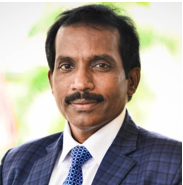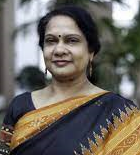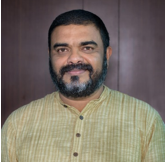Migration & Urbanization:
 In recent decades, Odisha has experienced a significant surge in migration, with numbers rising from 1.1 million individuals in 2001 to 1.54 million in 2011 (Census of India, 2011; Census of India 2001). According to data from the National Sample Survey, one in three rural households (33.5 per cent) is home to out-migrants, as reported by the Government of Odisha. This out-migration trend is predominantly male-driven and serves as a crucial livelihood strategy for rural households.
In recent decades, Odisha has experienced a significant surge in migration, with numbers rising from 1.1 million individuals in 2001 to 1.54 million in 2011 (Census of India, 2011; Census of India 2001). According to data from the National Sample Survey, one in three rural households (33.5 per cent) is home to out-migrants, as reported by the Government of Odisha. This out-migration trend is predominantly male-driven and serves as a crucial livelihood strategy for rural households.
Almost every district in Odisha is grappling with both opportunistic and distress-driven labour migration. The Economic Survey of India-2017 identifies Ganjam and Balangir districts as among the largest sources of labour migration in India. Despite an annual increase in these numbers, the Department of Labour & Employment, Government of Odisha, reports a registration of only 1,05,000 migrant labourers under the Inter-State Migrant Workers Act of 1979. Migrant workers from Odisha are recognized for their exemplary skills in various sectors, including plumbing, textile, domestic help, construction and brick making.
Migration acts as the demographic catalyst that links rural and urban areas, driving the expansion of cities. This urban growth, in turn, gives rise to a multitude of policy concerns spanning demographic, economic, and environmental dimensions. Swift urbanization is often correlated with challenges such as unemployment and the social integration of migrants into their new urban surroundings.
Cities, as a result, become focal points for showcasing societal disparities in income, housing, and various social resources. These issues, whether emerging or simply more pronounced in urban settings, highlight the complex interplay of factors contributing to the dynamics of contemporary urbanization.
Migration Trends in Odisha: A Snapshot
In-migration:
- In 2011, Odisha recorded a significant rise in migration, reaching 5.42 million individuals, up from 8.43 million in 1991.
- A substantial portion of these migrants hailed from rural areas, constituting 36.7% of Odisha’s overall population.
- Top of Form
- The urban migration rate stood at 49.7%, slightly surpassing the national average of 47.1%.

Distance of Migration:
- The predominant pattern of migration within Odisha is intra-state, accounting for 93.9% in 2011, with a significant portion (72.3%) attributed to movements within districts.
- Inter-state migration constituted a minor share at 5.5%, falling below the national average of 11.9%.
Net-migration:
- Analysis of Census data from 2001 to 2011 reveals a trend where outmigration from Odisha exceeded total in-migration.
- The net migration rates were recorded at -0.6% in 2001 and -0.8% in 2011, signalling a higher number of individuals leaving the state.
- Contrastingly, recent PLFS (Periodic Labour Force Survey) data for 2020-21 indicates a notable shift, showing a positive net migration rate of 0.74%. This suggests a change in the migration pattern, with an increase in individuals moving to Odisha during this period.
Legislative Framework:
- The Inter-State Migrant Workmen Act (ISMWA) of 1979 stands as a pivotal legislation designed to protect the rights of inter-state migrants.
- Tripartite Memorandums of Understanding (MoUs) have been established to ensure the well-being of inter-state migrant workers, with a specific focus on those employed brick kilns.
- Ongoing initiatives include endeavours to register more migrants, mitigate vulnerabilities through targeted interventions and the exploration of a potential migration policy.
Issue and key challenges
Intra-State Dominance
The majority of migration in Odisha occurs within the state, particularly in rural areas. This intra-state dominance has the potential to restrict exposure to diverse cultures and opportunities, thereby affecting overall societal development. Additionally, it is imperative to highlight the distinction between voluntary migration and distress migration, recognizing the vulnerabilities associated with each.
Gender Disparities
In intra-state migration, especially marriage-related moves, females constitute a substantial majority (73.4%). However, for inter-district and inter-state movements, males tend to dominate, often motivated by employment opportunities, underscoring gender-based disparities in migration patterns. Micro studies and field observations indicate that a significant number of women and girls from Odisha engage in domestic work. Notably, all urban slum dwellers are migrants. To effectively address these nuances, programs and policies need to focus on and advocate for gender segregated migration data.
Inter-State Out-Migration
Odisha experiences a substantial outflow of migrants to other states. Although the overall rate is comparatively lower than that of neighbouring states, the rising proportion of out-migration from urban areas indicates a shift in migration patterns, possibly influenced by employment prospects and lifestyle preferences.
Net Migration Imbalance:
Census data reveals a trend of more people departing from Odisha than those arriving, leading to negative net migration rates. Nevertheless, recent PLFS data indicates a positive net migration rate, hinting at a potential shift in the dynamics of migration.
Labour Exploitation:
The high prevalence of labour migration, especially in sectors like construction and brick making, raises apprehensions about the potential exploitation and vulnerability of migrant workers. The current legal frameworks may not comprehensively address these concerns.
The exploitation faced by female migrant workers is multifaceted, encompassing issues such as inadequate wages, extended working hours, hazardous working conditions, and even sexual exploitation. While the Protection of Women from Sexual Harassment (POSH) Act covers female migrant workers in the unorganized sector, there is a pressing need for stronger implementation, especially at the destination sites.
Data Collection and Policy Gaps:
Census and NSS data might not completely reflect the true extent of migration, potentially resulting in under-representation, particularly for women labourers in the unorganized sector. This can lead to inaccuracies in understanding migration trends and patterns.
Gaps in data collection at the grassroots level, coupled with the absence of a comprehensive migration policy, may impede effective planning and response. The implementation of a dedicated policy could specifically address the unique needs and challenges faced by migrants, contributing to a more accurate understanding of migration dynamics.
Changing Migration Cycle:
The changing migration cycle in Odisha, marked by a decline in inter-state out-migration from rural areas, signifies a shift in migration dynamics, potentially influenced by economic changes and distress-driven seasonal movements.
Need for Comprehensive Action:
While initiatives like the State Action Plan aim to address vulnerabilities, there is a need for more comprehensive actions, including improved registration of migrants, increased awareness, and targeted interventions to safeguard the rights and well-being of migrants.
In addressing these issues, a holistic approach involving accurate data collection, policy development, and community engagement is crucial to ensure the well-being and equitable treatment of migrants in Odisha.
Key questions
- What are the primary factors and the diverse impacts of migration, encompassing economic, social, political, and environmental dimensions?
- What are the challenges and concerns arising from migration in the post-COVID era?
- What are the destination-specific issues associated with migration from Odisha?
- What policies and strategies should be implemented to effectively manage migration, safeguard migrant rights, and address issues related to integration and assimilation?
Speakers / Panelists:
Shri G. Mathi Vathanan, Principal Secretary, Department of Housing and Urban Development, Govt of Odisha
 Shri G. Mathi Vathanan, an accomplished member of the Indian Administrative Service (IAS) from the 1994 batch, currently serves as a leading authority in the Housing & Urban Development Department of the Government of Odisha, India. In this pivotal role, Shri Vathanan spearheads transformative urban development initiatives, notably steering the Odisha Liveable Habitat Mission (Jaga Mission) to global recognition. His visionary leadership has earned accolades, including the prestigious World Habitat Award in 2019, making the Jaga Mission the world’s largest slum titling & upgradation program, positively impacting 1.7 million lives across Odisha. Dedicated to inclusive and sustainable practices, Shri G. Mathi Vathanan focuses on critical areas such as affordable housing, water & sanitation, community partnership & resilience, and urban waste management. A stalwart in the field, his commitment to improving the quality of life for marginalized communities positions him as a key influencer in shaping urban development policies and practices in the region.
Shri G. Mathi Vathanan, an accomplished member of the Indian Administrative Service (IAS) from the 1994 batch, currently serves as a leading authority in the Housing & Urban Development Department of the Government of Odisha, India. In this pivotal role, Shri Vathanan spearheads transformative urban development initiatives, notably steering the Odisha Liveable Habitat Mission (Jaga Mission) to global recognition. His visionary leadership has earned accolades, including the prestigious World Habitat Award in 2019, making the Jaga Mission the world’s largest slum titling & upgradation program, positively impacting 1.7 million lives across Odisha. Dedicated to inclusive and sustainable practices, Shri G. Mathi Vathanan focuses on critical areas such as affordable housing, water & sanitation, community partnership & resilience, and urban waste management. A stalwart in the field, his commitment to improving the quality of life for marginalized communities positions him as a key influencer in shaping urban development policies and practices in the region.
Prof. Kajri Mishra
 Dr. Kajri Misra, currently serving as the Dean of Xavier School of Human Settlements at Xavier University Bhubaneswar (XUB), stands as a distinguished academic with a strong background in Human Settlements. Holding a PhD in Rural Management from Cornell University, USA, she brings a wealth of knowledge and expertise to the academic arena. Dr. Misra’s academic journey includes a Master’s degree in Environmental Planning from CEPT, Ahmedabad, highlighting her commitment to a multidisciplinary approach in planning and development. Her academic pursuits culminated in a second PhD in Planning from Cornell University, further solidifying her standing as a thought leader in the field. As a prolific researcher, Dr. Kajri Misra has contributed significantly to the discourse on sustainable transportation and environmental policy. Her recent publication, “A Climate-Change Scorecard for United States Non-commercial Driver Education” in the SAE International Journal of Sustainable Transportation Energy Environment & Policy, reflects her commitment to addressing contemporary challenges. Dr. Misra’s presence promises to enrich discussions on Human Settlements, drawing from her extensive academic background and recent research contributions. Her multidimensional expertise, coupled with her role as the Dean at Xavier School of Human Settlements, positions her as a valuable contributor to the academic community and a key influencer in shaping the discourse on sustainable development and environmental policy.
Dr. Kajri Misra, currently serving as the Dean of Xavier School of Human Settlements at Xavier University Bhubaneswar (XUB), stands as a distinguished academic with a strong background in Human Settlements. Holding a PhD in Rural Management from Cornell University, USA, she brings a wealth of knowledge and expertise to the academic arena. Dr. Misra’s academic journey includes a Master’s degree in Environmental Planning from CEPT, Ahmedabad, highlighting her commitment to a multidisciplinary approach in planning and development. Her academic pursuits culminated in a second PhD in Planning from Cornell University, further solidifying her standing as a thought leader in the field. As a prolific researcher, Dr. Kajri Misra has contributed significantly to the discourse on sustainable transportation and environmental policy. Her recent publication, “A Climate-Change Scorecard for United States Non-commercial Driver Education” in the SAE International Journal of Sustainable Transportation Energy Environment & Policy, reflects her commitment to addressing contemporary challenges. Dr. Misra’s presence promises to enrich discussions on Human Settlements, drawing from her extensive academic background and recent research contributions. Her multidimensional expertise, coupled with her role as the Dean at Xavier School of Human Settlements, positions her as a valuable contributor to the academic community and a key influencer in shaping the discourse on sustainable development and environmental policy.
Shri Liby Johnson
 Shri Liby Johnson, the Executive Director of Gram Vikas in Odisha, boasts 25+ years of transformative leadership in social development. With a focus on water, sanitation, livelihoods, disaster management, and community institutions, Liby has driven large-scale poverty eradication efforts.
Shri Liby Johnson, the Executive Director of Gram Vikas in Odisha, boasts 25+ years of transformative leadership in social development. With a focus on water, sanitation, livelihoods, disaster management, and community institutions, Liby has driven large-scale poverty eradication efforts.
Starting with grassroots work in Bihar, Jharkhand, and Odisha, Liby later contributed to post-tsunami recovery in Kerala and Tamil Nadu. His journey evolved into impactful roles balancing on-the-ground initiatives with national and state-level policymaking. Notably, he played a key role in establishing a national resource organization under the National Rural Livelihoods Mission.
A Social Development Management specialist, Liby is a driving force behind rural empowerment, women’s institutions, and policy advocacy. Now leading Gram Vikas in Odisha, his wealth of experience and visionary leadership make him a compelling presence at the conference, where his insights will undoubtedly contribute to discussions on effective strategies for sustainable development and poverty eradication.
Shri Subhranshu Sekhar, President, Vending Association, Bhubaneswar
Shri Sisir Das, Tata Trust
Dr. Pijush Ranjan Rout, Urban Planner
 Dr. Rout is an urban regional planner, an urban management practitioner, a columnist and an advocate of space for cycling. Dr. Rout is currently posted as a Guest Faculty in the Department of Planning at Odisha University of Technology and Research, Bhubaneswar. He has an M. Tech in Planning from CEPT, Ahmedabad and Ph.D. from Utkal University including a PG Diploma from Institute for Housing and Urban Development Studies, The Netherlands. He is a firm believer in Social Responsibility, social audits, sustainable transport, and Corporate Social Responsibility in City Management. He supports various knowledge networks on mobility, climate change, Renewable Energy, and governance in the urban sector. His area of research incapsulates Inter-Governmental Relations, Urban Governance, Urban Regional Planning, City Development Strategy, Low Carbon Growth, Sustainability, Heritage, Public Policy, City Branding, Sports based Cities, etc. He has been recognized and conferred with national and international awards and fellowships for his contribution towards sustainable environment and climate action.
Dr. Rout is an urban regional planner, an urban management practitioner, a columnist and an advocate of space for cycling. Dr. Rout is currently posted as a Guest Faculty in the Department of Planning at Odisha University of Technology and Research, Bhubaneswar. He has an M. Tech in Planning from CEPT, Ahmedabad and Ph.D. from Utkal University including a PG Diploma from Institute for Housing and Urban Development Studies, The Netherlands. He is a firm believer in Social Responsibility, social audits, sustainable transport, and Corporate Social Responsibility in City Management. He supports various knowledge networks on mobility, climate change, Renewable Energy, and governance in the urban sector. His area of research incapsulates Inter-Governmental Relations, Urban Governance, Urban Regional Planning, City Development Strategy, Low Carbon Growth, Sustainability, Heritage, Public Policy, City Branding, Sports based Cities, etc. He has been recognized and conferred with national and international awards and fellowships for his contribution towards sustainable environment and climate action.
Dr Shantanu Rath, Director, Odisha Urban Academy (OUA)

